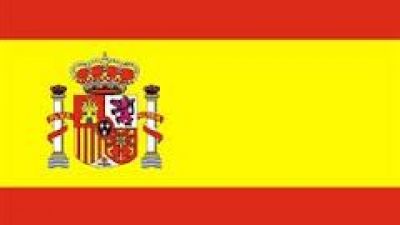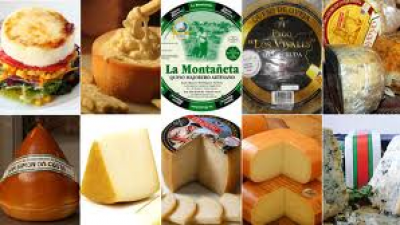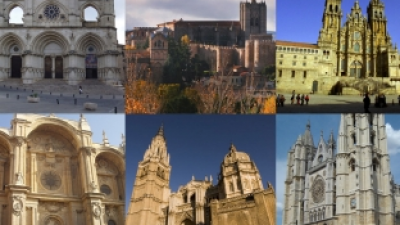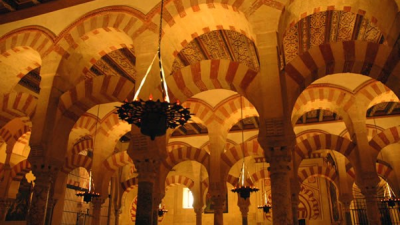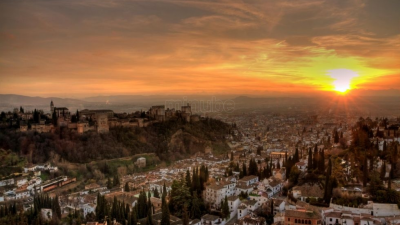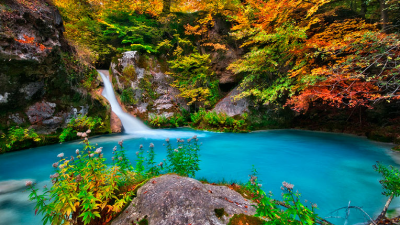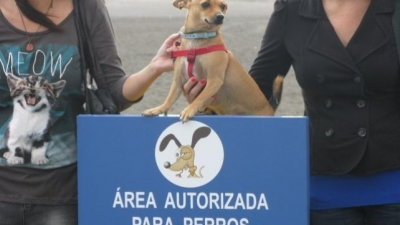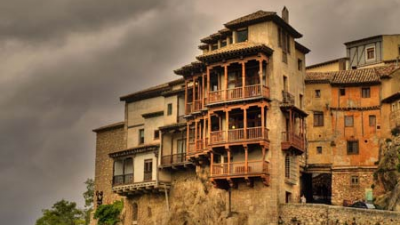The best parties in Spain
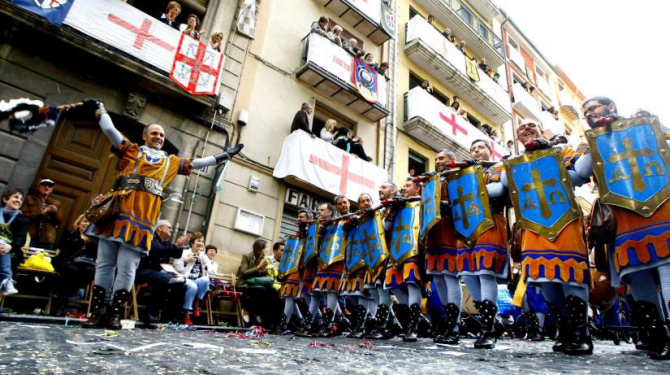
Source: listas.20minutos.es
Festivals of International Tourist Interest (Spain)
TOP 23:
Berga Patum
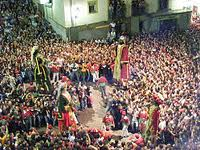
The Fiesta de la Patum de Berga is a traditional celebration that takes place during the celebrations of Corpus Christi in the Barcelona town of Berga. It has been declared by Unesco Intangible Cultural Heritage of Humanity on November 25, 2005 and registered in 2008 on its representative list and therefore automatically chosen as Treasure of the Intangible Cultural Heritage of Spain next to the Mystery of Elche. Previously, in 1983, the traditional festival of National Interest was declared by the Generalitat of Catalonia. The Patum was founded at the end of the 14th century as a festival of essentially popular character and has been documented since 1525.
TOP 22:
Naval Battle of Vallecas
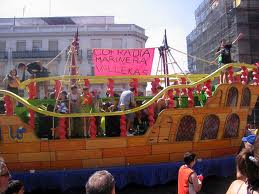
The Naval Battle of Vallecas is a party celebrated in the Puente de Vallecas district in Madrid, in which the participants throw water at each other. It is celebrated on the Sunday of the second or third weekend of July, included in the popular festivities of the Virgen del Carmen.
TOP 21:
Paso del Fuego
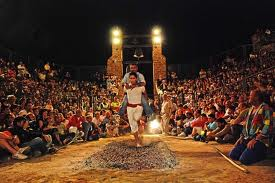
Paso del Fuego is a celebration that takes place on the night of San Juan in the town of San Pedro Manrique, in Spain. At midnight, the Sanpedranos, preceded by three trumpet blows, cross barefoot, without burning, a path of incandescent embers arranged as a carpenter. Tradition dictates that the first three young men to pass must carry the three mondidas of the holidays in tow. El Paso del Fuego was declared a Festival of International Tourist Interest in 2008.
TOP 20:
Carnival in Andalusia
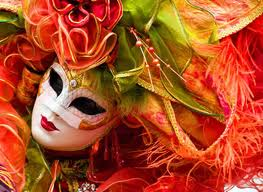
Carnival is a public celebration that takes place immediately before Christian Lent, with a variable date (from the end of January to the beginning of March according to the year), and that combines some elements such as costumes, parades, and street parties. By extension they are called like this some similar parties at any time of the year. Despite the great differences that its celebration presents in the world, its common characteristic is that it is a period of permissiveness and some lack of control.
TOP 19:
horse Fair
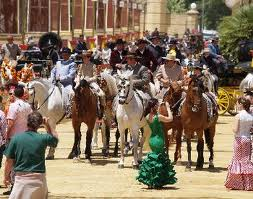
The Horse Fair is together with Holy Week the largest and most important festival of Jerez de la Frontera (Cádiz). It is declared of international tourist interest by the Secretary of State for Tourism and Commerce belonging to the Ministry of Industry, Tourism and Commerce of Spain
TOP 18:
Rapa das bestas
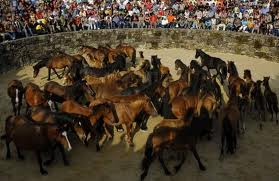
La Rapa das Bestas is the name of a cultural and tourist festival that consists of cutting the mane of horses that takes place in curros (enclosures where horses are collected) held in several locations in Galicia (Spain). The mixed Galician horse and the Galician purebred horse are used. The best known is the rapa das bestas de Sabucedo, in the City Council of La Estrada, which lasts three days: the first Saturday, Sunday and Monday of July. In fact, it gives the name to the celebration (Rapa das Bestas de Sabucedo), while in most places we talk about curros, such as Valga curro, etc.
TOP 17:
Sanlúcar horse races
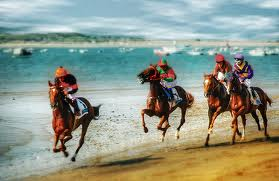
The Sanlúcar Horse Racing is an equestrian competition that is held annually on the beach of the Spanish municipality of Sanlúcar de Barrameda, in Andalusia. Its organization corresponds to the Horse Racing Society of Sanlúcar de Barrameda and the City Council of Sanlúcar. These are the second races of English-style horses that were regulated in Spain, since the first ones were held in the Alameda de Osuna in 1835, and were held again in 1843 and 1849. Therefore, the Sanlúcar races, which date 1845 are the oldest of those celebrated in Spain1 They are declared a Festival of Andalusian, National and International Tourist Interest. Together with the races of San Sebastián, Sevilla, Mijas, Dos Hermanas, they are part of the Spanish equestrian circuit.
TOP 16:
Pilgrimage of El Rocío
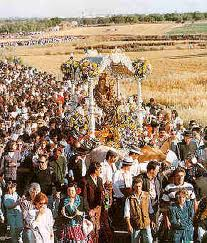
The Romería del Rocío is a manifestation of Andalusian Catholic popular religiosity in honor of the Virgen del Rocío. The pilgrimage is celebrated on the weekend of Pentecost Sunday. The Virgin is located in the Hermitage of El Rocío, which is located in the Almonte village of the same name, in the province of Huelva. The brotherhood of Almonte is responsible for organizing the cults and pilgrimage of the Virgin.
TOP 15:
Malaga's carnival.
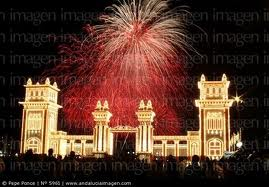
The Feria de Agosto, or simply, Feria de Málaga, is a festive event in the city of Malaga, Spain. The history of the Malaga Fair commemorates the capture of the city by the Catholic Monarchs on August 19, 1487, incorporating it into the Crown of Castile.
TOP 14:
Tomatina
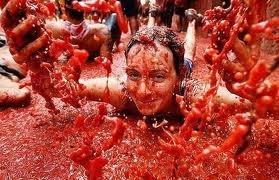
La Tomatina is a party celebrated in the Valencian municipality of Buñol, in which the participants throw tomatoes at each other. It is celebrated on the last Wednesday of the month of August, nestled within the Buñol festival week.
TOP 13:
Battle of the wine
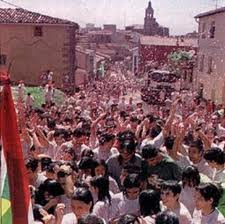
The battle of wine is a Festival of National Tourist Interest, 1 that takes place annually during the morning of June 29, the feast of San Pedro, in the city of Haro, La Rioja (Spain). It consists of soaking other participants with red wine until it is completely purple and takes place about 6 km north of the town of Haro, in the place of the Riscos de Bilibio, located next to the place known as Las Conchas, where the Ebro makes its entrance in La Rioja.
TOP 12:
Carnival in the Canary Islands (Tenerife)
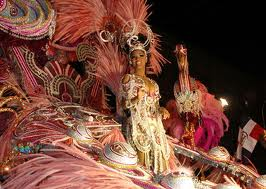
The Carnival of Santa Cruz de Tenerife shows, together with the Carnival of Cádiz, the highest consideration for parties granted by the ministry with competitions in tourism in Spain. It is considered the second most popular and internationally known carnival, after those held in Rio de Janeiro (Brazil). In fact, the city of Santa Cruz de Tenerife is twinned with the city of Rio de Janeiro for this reason. In addition to this, it is remarkable that Father Anchieta, of Tenerife origin, founded this city together with São Paulo in the 16th century.
TOP 11:
April Fair
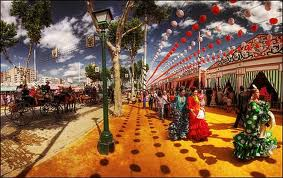
The April Fair is known as the set of booths and attractions that are installed in the fairgrounds of the Los Remedios neighborhood for the celebration of the local festival in Seville (Spain).
TOP 10:
Saint John festivity
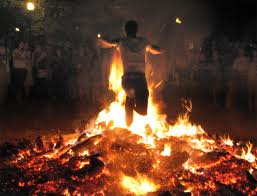
The Night of San Juan is a very old festivity that is usually linked to lighting fires or fires, linked to the celebrations in which the arrival of the summer solstice was celebrated in the northern hemisphere, whose main rite is to light a bonfire . The purpose of this rite was "to give more strength to the sun", which from those days on, was becoming "weaker" - the days are getting shorter until the winter solstice. Symbolically fire also has a "purifying" function in people who contemplated it. It is celebrated in many parts of Europe, although it is especially rooted in Spain, Portugal (Fogueiras de São João), Norway (Jonsok), Denmark (Sankthans), Sweden (Midsommar), Finland (Juhannus), Estonia (Jaanipäev) and United Kingdom (Midsummer). In South America, Brazil has Festas Juninas, in Paraguay, Bolivia, Chile, Peru and Venezuela the night of San Juan. The night of San Juan is also related to ancient traditions and Spanish legends such as the Legend of the Enchanted.
TOP 9:
Bilbao Big Week
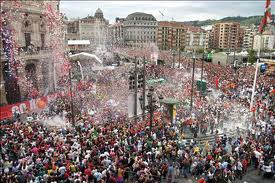
Bilbao Big Week (in Basque: Bilboko Aste Nagusia), is the main festival of Bilbao, Basque Country, Spain, which is celebrated annually for 9 days from the Saturday following August 15, the feast of the Assumption of Our Lady .
TOP 8:
Pillar parties
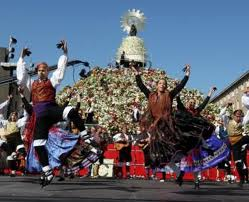
The Fiestas del Pilar are the patron saint festivities of Zaragoza (Aragon, Spain) that are celebrated in honor of the Virgen del Pilar, patron saint of the city. They take place the week of October 12 in which the patron feast is celebrated. In general, the holidays begin the weekend before the 12th and last until the following Sunday, so they last about ten days. A good number of festive events organized by the City Council to which not a few private initiatives of private organizations or groups take advantage of the week to organize exhibitions, competitions and other activities of popular interest take place at the Pilar festivities.
TOP 7:
Easter week
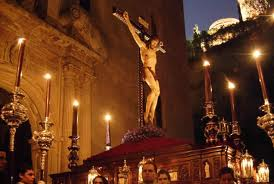
Holy Week is the annual Christian commemoration of the Passion, Death and Resurrection of Jesus of Nazareth. Therefore, it is a period of intense liturgical activity within the various Christian confessions. It begins on Palm Sunday and ends on Easter Sunday, although its celebration usually begins in several places the previous Friday (Friday of Dolores) and is considered part of it on Easter Sunday. Holy Week is preceded by Lent, which ends in the Passion Week where the Eucharist is celebrated on Holy Thursday, the Crucifixion of Jesus is commemorated on Good Friday and the Resurrection in the Easter Vigil during the night of Holy Saturday to Sunday Resurrection During the Holy Week numerous samples of popular religiosity take place throughout the world, highlighting the processions and representations of the Passion.
TOP 6:
Cadiz Carnival
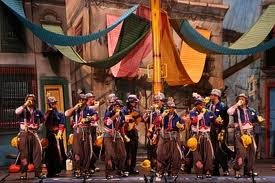
The Carnival of Cádiz is one of the most famous carnivals in Spain for which it has been recognized (together with the Carnival of Santa Cruz de Tenerife), as of International Tourist Interest (unique in Spain with such distinction). In July 2009, he joined the list of the ten Treasures of the Intangible Cultural Heritage of Spain. On the other hand in 2010 the Carnival of Cádiz and the Carnival of Santa Cruz de Tenerife were twinned. Every year and during the months of January and February the Carnival Group Contest is held in the Grand Theater.
TOP 5:
Sella International Descent
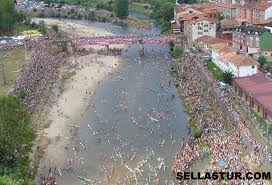
The International Descent of the Sella is celebrated on the first Saturday of August after the 2nd of that month between Arriondas and Ribadesella (Principality of Asturias - Spain), with a 20 km route along the Sella River. The test is organized by the Spanish Canoeing Federation and by delegation by the Organizing Committee of the International Descent of Sella and by the Canoeing Federation of the Principality of Asturias, and is declared a Festival of International Tourist Interest.
TOP 4:
Fallas in Valencia
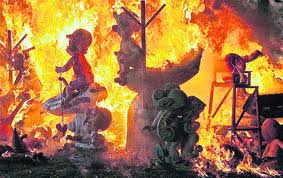
Las Fallas (Falles in Valencian) are a festival with a deep-rooted tradition in the city of Valencia and different towns of the Valencian Community, which are celebrated from March 15 to 19. Currently, this holiday has become a very important tourist attraction, since they are listed as a festival of International Tourist Interest. These parties are also called Josefin festivities or festivals of Sant Josep (in Valencian), since they are celebrated in honor of San José, patron of the carpenters.
TOP 3:
Sanfermines
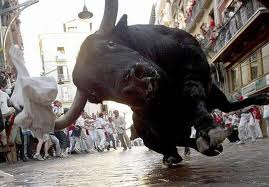
The festivities of San Fermín or Sanfermines (in Sanferminak Basque) are a celebration in honor of San Fermín that takes place annually in Pamplona, capital of the Foral Community of Navarra. The festivities begin with the launch of the chupinazo (rocket) from the balcony of the City Council of Pamplona at 12 noon on July 6 and end at 24h on July 14 with the "Poor Me", a farewell song. One of the most famous activities of the Sanfermines is the enclosure, which consists of a route of 849 meters in front of the bulls and culminating in the bullring. The confinements take place every day between July 7 and 14 and begin at eight in the morning, with an average duration of between two and three minutes. Sanfermines have an origin that goes back several centuries, although their worldwide fame is a recent phenomenon, also linked to the dissemination that Ernest Hemingway gave them; This is a unique party and, without a doubt, the event that Pamplona is best known in the world. Its current appearance, cosmopolitan and massive, is the result of a slow historical evolution whose origins date back to the Middle Ages. Three independent celebrations are in their origin: religious acts in honor of San Fermin, since before the twelfth century, trade fairs and bullfights, both documented since the fourteenth century. The Church celebrated on October 10 the feast of San Fermín, patron of Navarra. Tired of the inclement weather of autumn, the City Council of Pamplona asks the bishop in 1591 to move the celebration to July 7, to which the prelate agreed. On that date, fairs were held in Pamplona with bullfights. In this way, there was a coincidence between the religious celebration and the fairground bustle, in which the bulls played an essential role. It has long been believed that the Feast of San Fermin was celebrated on September 24.1 The patron of the city, San Saturnino, remains with a much more modest celebration on November 29. For many of the visitors, this fact causes the confusion of thinking that San Fermín is the patron of the city. Another mistaken belief is to think that San Fermín is patron of Pamplona, when he is from all of Navarra. Honor that, from ... shares with San Francisco dde Javier. The patron of Pamplona is San Saturnino or San Cernin, bishop of Toulouse and martyr. The American writer Ernest Hemingway was one of those who helped spread them through his book Fiesta. They are considered one of the best celebrations in the world, together with the Carnivals of Rio de Janeiro, Venice and Cologne, and the Munich Beer Fair. The population of Pamplona during this holiday week goes from 190,000 inhabitants to more than 2,800,000 people.
TOP 2:
Cuellar parties
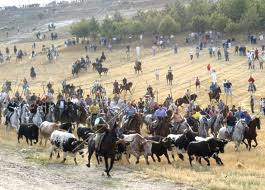
The enclosures of Cuéllar are a popular Spanish festival declared of National Tourist Interest that is celebrated the last weekend of August in the Segovian city of Cuéllar (Castilla y León), and they are considered the oldest enclosures in Spain, because so far no city has presented a document prior to that available by Cuellar, dated at the beginning of the 13th century.1 At present they are celebrated within the festivities in honor of the Virgin of the Rosary, patron saint of the town, although the bulls were originally run for the festivities of San Juan, Corpus Christi and other important celebrations, as was the case of the birth of Prince Don Juan, future Juan II of Castile.
TOP 1:
Moors and Christians of Alcoy
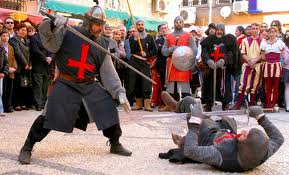
The festival of Moors and Christians was born as a commemoration of the stage of Muslim power in the Iberian Peninsula and the battles that alternated power between Muslims and Christians. In some coastal areas, the fight recalls the fight against Berber pirates of the fifteenth, sixteenth or seventeenth centuries. In recent times, these festivals are experiencing spectacular growth, taking place in different Spanish cities and towns of the peninsular Southeast, such as the Region of Murcia, Castilla-La Mancha, Eastern Andalusia and especially the Valencian Community, especially in the province of Alicante , where currently the largest number of cities and towns that celebrate this type of celebrations are concentrated.


